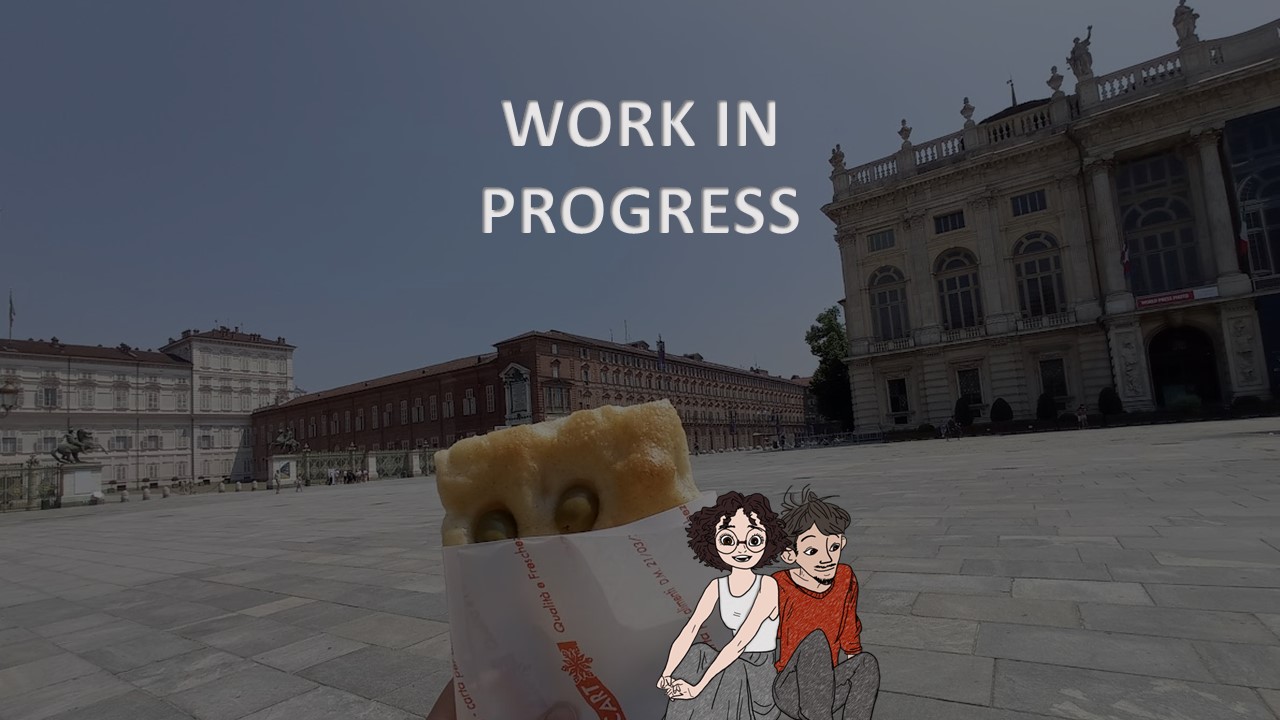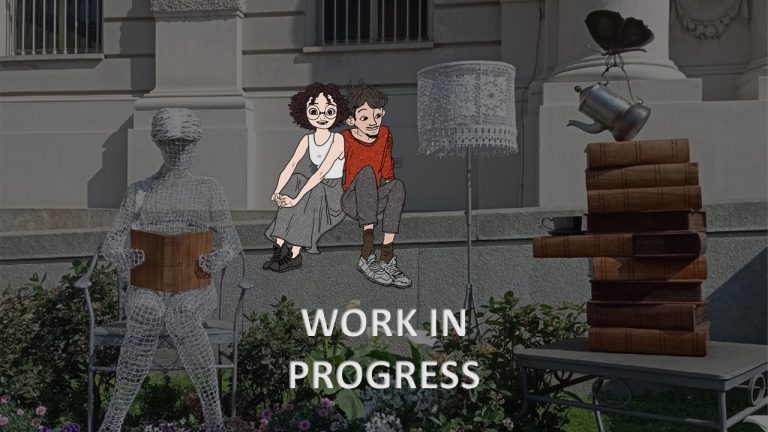Once upon a time, when history was composing his chronicles, two remarkable cities, Torino and Bursa, held the prestigious title of being capitals. But the winds of change have blown, and these cities have stepped out of the spotlight to become two of the most fascinating (maybe a little underrated) destinations in their respective countries.
We are Irene and Bera and, in this article, we will take you on a journey through the past and present of these cities, as we will explore their unique stories. Irene hails from the charming Italian city of Torino, specifically from the nearby Settimo torinese, while Bera’s roots trace back to the historic Turkish city of Bursa.
N.B. The definition of city can vary greatly from one corner of the world to another. In Turkey, cities like Istanbul, Konya, and Bursa sprawl across vast expanses, forming metropolises that transcend traditional boundaries. They are not just cities; they are thriving ecosystems unto themselves, each encompassing numerous municipalities. On the other hand, Italy paints a different portrait of urbanity. There, cities like Torino stand as cultural and historical epicenters, albeit in a more compact form compared to their Turkish counterparts. Therefore Torino is usually complemented by the surrounding towns and districts. For this reason here we will also say something about Settimo torinese, a provincial city that gives Torino an extra value.
History
Cities hold the secrets of empires long past, where the ink of time has penned tales of rise and fall
Both Torino and Bursa have played crucial roles in their respective nations’ histories.
Turin’s history dates back to Roman times when it was known as Augusta Taurinorum. It served as a vital military outpost, and the Roman grid plan still influences the city’s layout today.
The House of Savoy, a powerful noble family, made Torino its stronghold in the 16th century. Under their rule, the city experienced a period of opulence, which is reflected in its architectural treasures.
Turin’s significance reached its peak when it became the capital of the Kingdom of Sardinia-Piedmont under King Victor Emmanuel II. The city played a central role in the unification of Italy in 1861, ultimately becoming the first capital of the newly formed nation.
Bursa, known as “Bursa-i Cedid” or the “New Bursa” during the Ottoman period, stands as a testament to the rise and splendor of the Ottoman Empire. As the early capital of this mighty empire, Bursa’s history is steeped in grandeur and intrigue.
The Birthplace of the Ottoman Empire: Bursa played a pivotal role in the early Ottoman period, serving as the capital from 1326 to 1365. It was here that the first sultans of the Ottoman Empire established their rule, marking the city as the birthplace of Ottoman governance. Bursa ceded its position as the Ottoman capital to Edirne (formerly Adrianople), before the Ottomans ultimately established Istanbul (formerly Constantinople) as their imperial capital.
Architecture
The silent poetry of cities, where every building tells a story, and every facade hides a mystery
Torino and Bursa exhibit distinct architectural styles and influences due to their contrasting religious backgrounds and historical contexts. While Torino is characterized by Christian churches and Baroque/Renaissance architecture, Bursa showcases Islamic mosques and Ottoman architectural elements. These architectural differences contribute to the unique charm and cultural identity of each city.
Torino boasts a magnificent blend of Renaissance and Baroque architecture. The Royal Palace of Torino, designed by renowned architect Filippo Juvarra, stands as an epitome of Baroque opulence. Its breathtaking facade and lavish interiors are a testament to the city’s royal past. Moreover, the Mole Antonelliana, an iconic symbol of Torino, is a stunning example of neoclassical architecture.
Bursa’s architecture is a celebration of Ottoman grandeur. The Green Mosque (Yesil Camii) showcases exquisite tilework and intricate calligraphy. Meanwhile, the Bursa Grand Bazaar, a labyrinthine market, is a vibrant testament to Ottoman commerce and culture. The city’s thermal baths, known as the Bursa Baths, are another remarkable architectural treasure where visitors can soak in centuries-old tradition.
Religion
Mosques and churches, where prayers become the heartbeat of the urban soul
On an ideal journey between these two fascinating cities, Bursa and Turin, we discover how religious faith is lived and celebrated.
Let’s begin with Bursa. Here, religion is an integral part of daily life. Five times a day, the call to prayer, the adhan, echoes from the minarets of mosques, inviting the faithful to turn to Allah. Mosques, as places of worship and reflection, are not only sacred spaces but also masterpieces of architecture. The Grand Mosque, known as Ulu Cami, is a symbol of the city with its twenty domes and spacious inner courtyard that invites meditation. The Green Mosque, or Yeşil Cami, is renowned for its vibrant glazed tiles, while the Yeşil Türbe mausoleum, with its intricately decorated dome, exudes spirituality.
Now we turn to Turin, a city with a Catholic heart, where spirituality intertwines with art and culture. Here, the sounds that characterize religious life are not calls to prayer but the ringing of church bells, marking the rhythm of the day. Among the most iconic places of worship is the Cathedral of St. John the Baptist, which houses the Shroud (Sindone) of Turin, one of the most venerated relics in Christianity. Equally striking is the Basilica of Superga, perched on a hill offering breathtaking views of the city, with a deep and somber connection to the history of one of Turin’s football teams (perhaps we’ll talk about that in another article). Another architectural marvel is the Church of the Gran Madre, with its imposing neoclassical façade gazing over the River Po and Piazza Vittorio.
In both cities, respect for spirituality and local tradition is essential. Visiting these places is not only an opportunity to admire their beauty but also to connect with the faith and culture that shaped them. An experience that, if approached with sensitivity, can be profoundly enriching.
Natural Beauties
Cities framed by nature’s beauty are like living postcards
In Torino and Bursa, nature is more than just a backdrop—it’s a living, breathing part of the cities’ souls, shaping their rhythm and filling them with quiet majesty. These two cities, though separated by continents, share a unique bond with the landscapes that cradle them.
Torino stands with the Alps always in view, their snow-capped peaks cutting sharp and serene outlines against the sky. The city itself is gently hugged by hills, like the storied Superga and Cappuccini, whose green slopes offer sanctuary and spectacular views for those who venture up. And then there’s the Po, the river snakes calmly through Torino and its waters weave a gentle rhythm that matches very well the city’s charm. It is the longest river in Italy, whose journey begins high in the Alps at Pian del Re and, from there, the Po creates its way across the north of the country, passing through cities like Settimo Torinese and winding its way to the sea.
Now, picture Bursa, a city cradled by its own towering guardian, the mighty Uludağ. Known as the “Grand Mountain,” it looms over the city, its slopes a playground for nature lovers and adventure seekers alike. On quieter days, its silhouette is a comforting backdrop to the city’s bustling streets. But Bursa doesn’t stop there. There’s Gölyazı, a tranquil village seemingly floating on the calm waters of Uluabat Lake. Tiny boats bob gently along the shore, ancient trees dip their roots into the lake’s edge, and sunsets there paint the water in fiery hues that leave you spellbound. And not far away lies the serene İznik Lake, its vast surface mirroring the sky and offering a quiet escape surrounded by layers of history.
In both cities, nature is not just something to look at—it’s something you feel. Both cities remind us that while people create cities, it’s nature that truly shapes their souls. It whispers in the wind, hums in the water, and glows in the light that softens every corner. These are places where every hill, river, and horizon becomes a storyteller, weaving tales of beauty and timelessness into the fabric of everyday life.
Location
Cities as conduits of connection, bridging distant lands and peoples in the tapestry of trade and culture
xxxx Torino and Bursa are both situated in the northwestern regions of their respective countries and they are crucial hubs for trade and commerce throughout their histories.
Historical markets
Quote
xxxxxx Porta Palazzo in Turin and Kapalicarsi in Bursa
Food
Quote
xxxxxxx
Coffee and Tea
Quote
xxxx Torino (espresso, Lavazza, bicerin), Bursa (unique turkish coffee,çay)
Cars
Quote
Torino (Fiat and other factories + museum), Bursa (car museums).
Other museums
Quote
Torino (museo Egizio, risorgimento, royal palace, ecomuseum in Settimo, chemistry museum in Settimo…), Bursa (
Library
Quote
Torino (big big library in Settimo called Archimede), Bursa (yellow one on the river)
Stadiums
Quote
(sport and sy




